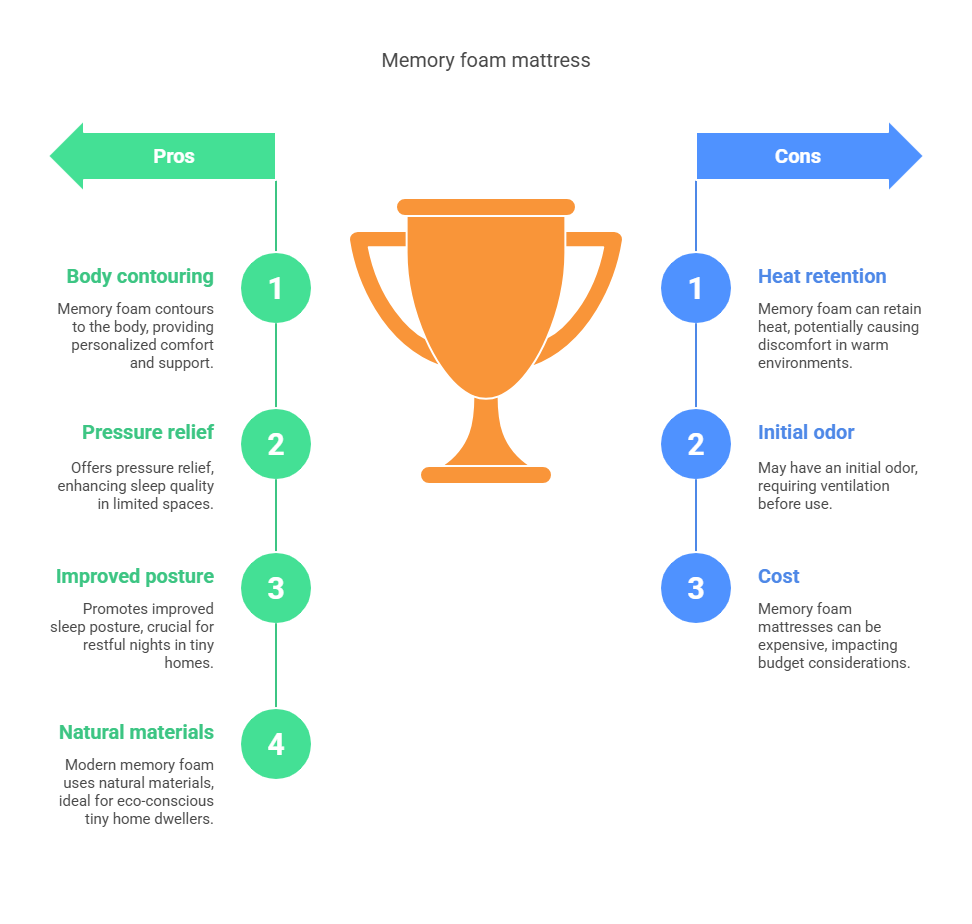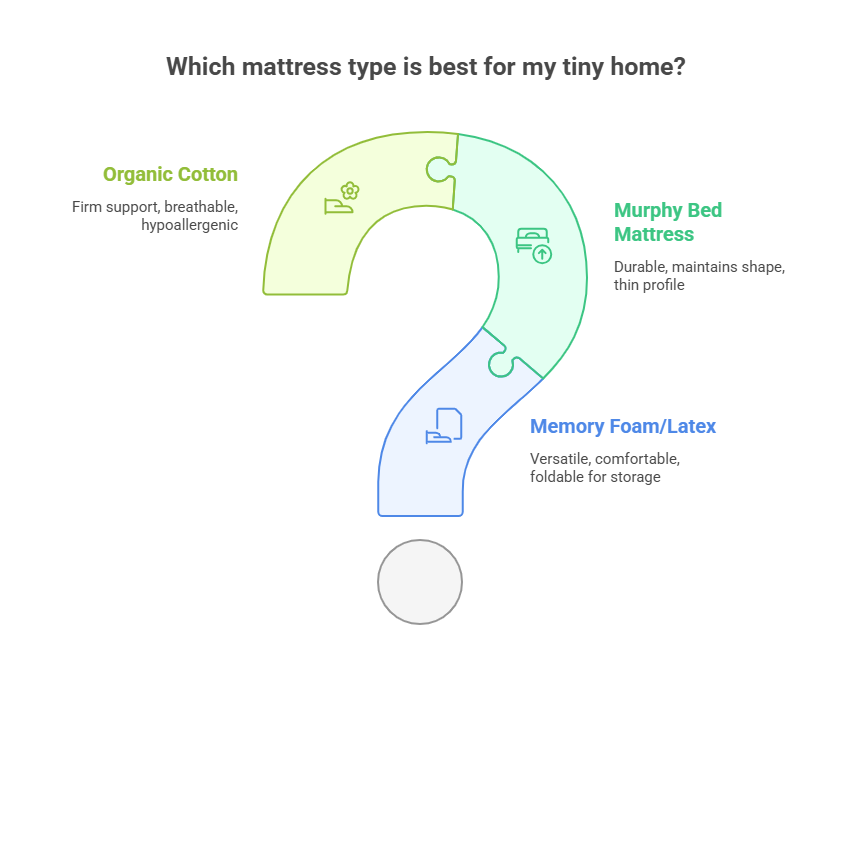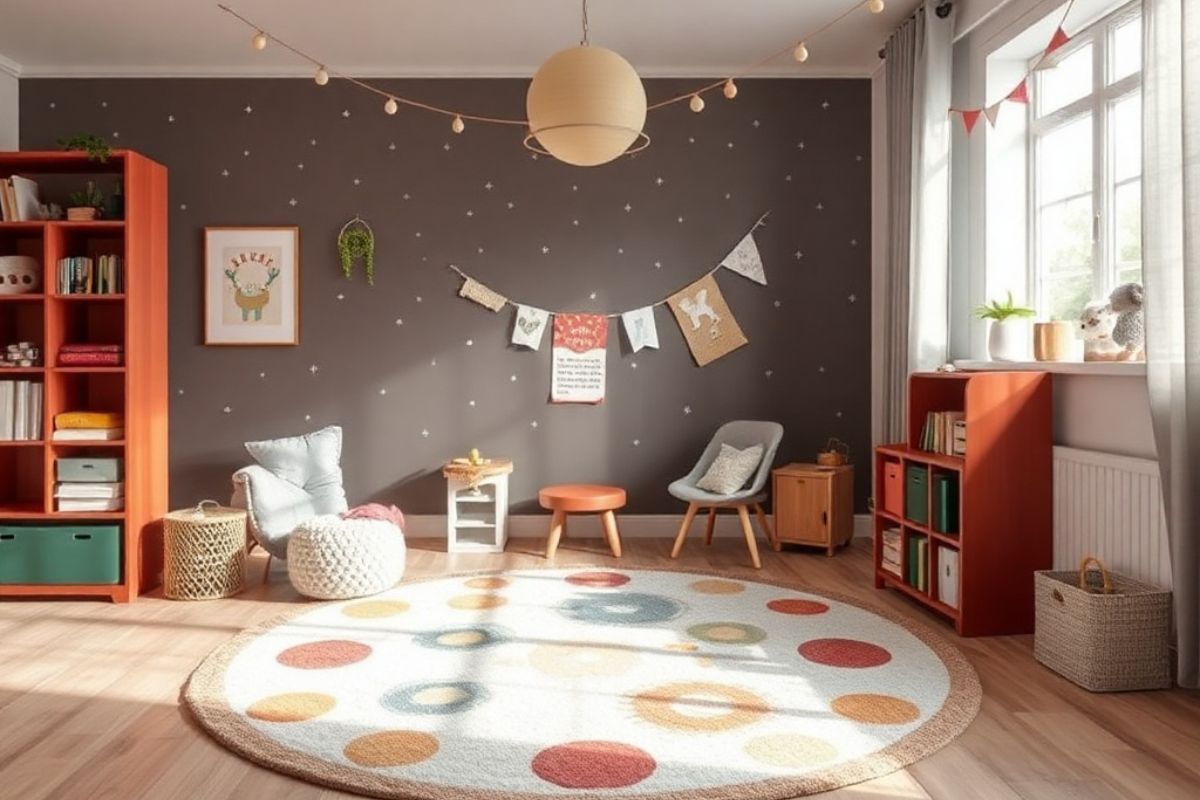Designing a Healthier Tiny Home: Don’t Overlook the Mattress

Tiny homes are increasingly popular for their ability to provide a minimalist lifestyle, reduce environmental impact, and offer a unique sense of freedom. However, when it comes to designing a tiny home, many people focus on the furniture, layout, and decor, often neglecting one of the most important components: the mattress. A mattress isn’t just a place to sleep; it’s integral to your health, well-being, and quality of life. So, when you're planning the interior of your tiny home, it’s essential to make a conscious decision about the mattress. Not only will the right choice affect your comfort, but it will also impact your sleep quality and overall health.
In a small space, every element must serve more than one purpose, and your mattress is no exception. If you’re designing a healthier tiny home, non-toxic mattresses for small living should be a top priority. Here’s why.
The Health Impact of Choosing the Right Mattress
In tiny homes, space is limited, so each item must contribute to your well-being. That includes the mattress, which plays a crucial role in your health. Traditional mattresses can often contain harmful chemicals like flame retardants, synthetic foams, and adhesives, which can release volatile organic compounds (VOCs) that negatively affect your indoor air quality. This is especially problematic in tiny homes, where ventilation can sometimes be limited.
Non-toxic mattresses, on the other hand, are made from natural materials like organic cotton, wool, and natural latex, which are free from harmful chemicals. These mattresses are hypoallergenic, less likely to irritate the skin or respiratory system, and can create a healthier sleep environment. In a tiny home where fresh air is limited, making this switch could have a significant impact on your health.
Maximizing Comfort in a Small Space
One of the most important aspects of tiny home living is making the most of limited space. Your mattress needs to fit comfortably in your compact home while providing you with a restful night’s sleep. Since tiny homes are often built with efficient, multifunctional furniture, your mattress may also need to serve double duty. Many people opt for murphy beds, lofted beds, or pull-out beds in tiny spaces, and it’s essential that your mattress suits this versatility without compromising comfort.
Memory foam mattresses, especially those made with organic or non-toxic materials, are a popular choice because they contour to the body, offering pressure relief and improved sleep posture. While memory foam was once associated with synthetic chemicals, many modern versions are now made using natural, plant-based materials, making them a great option for tiny homes. The foam’s ability to mold to your body ensures that no matter how much space you have, your mattress will provide optimal support for a good night’s rest.

Durability and Longevity
Another key factor in choosing the right mattress for a tiny home is durability. In smaller spaces, there is often more foot traffic, and the furniture is subject to frequent use and movement. Since a mattress is a long-term investment, it’s crucial that it stands up to the wear and tear of daily use.
Natural latex mattresses are a fantastic option for tiny homes due to their durability. Latex mattresses are made from rubber, which naturally resists wear and tear. They can last up to 20 years or more with proper care, making them a sustainable choice for a tiny home where long-term solutions are essential. The organic latex found in non-toxic mattresses also offers natural resistance to dust mites, mold, and mildew, which can be particularly important in a small, enclosed living space.
Eco-Friendly and Sustainable Materials
Sustainability is often a primary concern for those choosing to live in tiny homes, and for good reason. Tiny home living is about reducing your ecological footprint, and that includes the products you bring into your home. Non-toxic, eco-friendly mattresses made from natural materials like organic cotton, bamboo, and natural latex have a significantly lower environmental impact compared to traditional mattresses made with synthetic chemicals and petroleum-based materials.
Moreover, many eco-friendly mattresses are produced using sustainable manufacturing processes. Look for mattresses made by companies that prioritize fair labor practices and source their materials responsibly. Choosing a mattress that aligns with your values not only supports your health but also contributes to the overall sustainability of your tiny home.

Finding the Right Fit for Your Tiny Home
In a tiny home, every piece of furniture needs to be carefully chosen to fit the space and your lifestyle. The same goes for your mattress. Thankfully, many mattress brands now offer compact, foldable, and customizable options specifically designed for small spaces.
1. Memory Foam and Latex Mattresses
As mentioned earlier, memory foam and latex mattresses are excellent choices for tiny homes due to their versatility and comfort. If you have a lofted bed or a pull-out couch, consider a foldable mattress that can be stored away when not in use. Many memory foam mattresses come in convenient, compressed rolls, making them easier to transport and maneuver into tight spaces.
2. Murphy Bed Mattresses
If you’re considering a murphy bed, you’ll need a mattress that can withstand frequent folding and unfolding. Look for a high-quality foam mattress that maintains its shape and doesn’t lose its firmness over time. A mattress with a thinner profile is ideal for murphy beds, and some manufacturers offer mattresses specifically designed to fold with ease while still providing a comfortable night’s sleep.
3. Organic Cotton Mattresses
If you prefer a more traditional mattress, an organic cotton mattress may be the right fit. These mattresses are typically firmer than memory foam, providing more support and promoting better spinal alignment. Since cotton is breathable and naturally hypoallergenic, an organic cotton mattress is an excellent choice for tiny homes where airflow may be limited.

Reducing Allergens and Improving Air Quality
A healthier tiny home isn’t just about the mattress itself but also about the air quality and environment in which you sleep. Non-toxic mattresses are not only free from harmful chemicals but also reduce the risk of allergens like dust mites, mold, and mildew. These allergens can easily accumulate in small spaces, exacerbating allergies or respiratory issues.
By choosing an eco-friendly mattress, you're also contributing to better indoor air quality. Many of these mattresses are naturally breathable, helping to regulate temperature and moisture levels, which is important in the confined space of a tiny home.
Conclusion
Designing a healthier tiny home is about making thoughtful decisions that prioritize your well-being, sustainability, and comfort. One area that often gets overlooked is the mattress, but it's one of the most critical components for ensuring restful sleep and maintaining good health. By opting for non-toxic mattresses for small living, you’re not only making an investment in your sleep quality but also in your overall lifestyle. Remember, when space is limited, every choice counts, so make sure your mattress aligns with your health-conscious and eco-friendly goals for your tiny home.
Choosing a non-toxic mattress will help create a restful environment, ensuring you sleep well and wake up refreshed—no matter how small your space.









